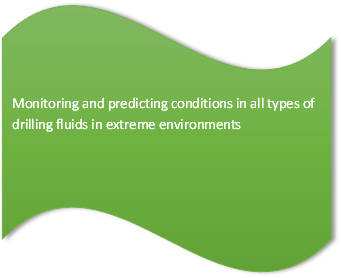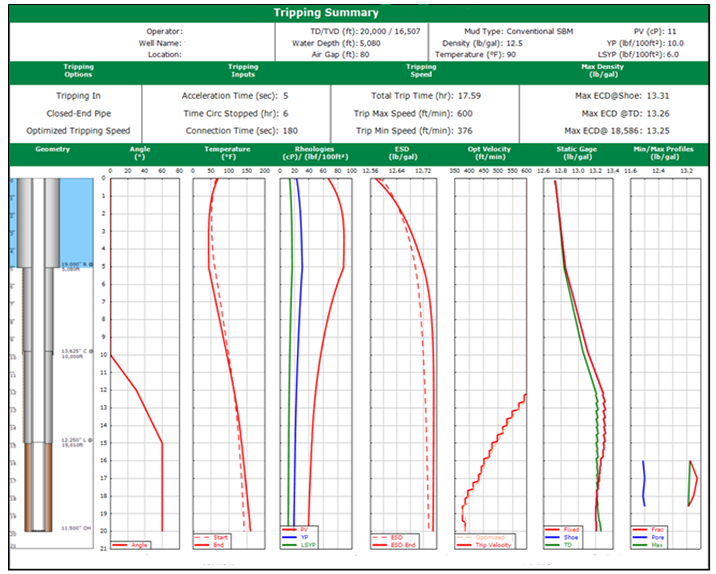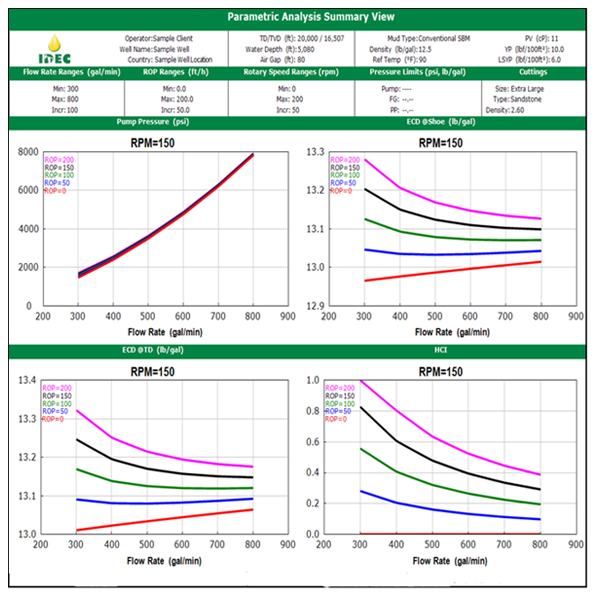Well Profile Breakdown
In order to increase the accuracy of downhole density and rheology estimations, the well is broken down into 100-ft segments. Additional segments are added as necessary to account for well geometry changes, such as geometric section or BHA components.
Each individual wellbore segment is assigned its own set of properties, such as diameter, pipe sizes, angle, drill pipe eccentricity, temperature, etc. A finite difference technique is then used to combine data from all these segments and generate downhole profiles of density, rheology and pressures that represents a realistic view of the well from surface to TD.
Temperature Profile
Downhole temperature profiles arguably have the biggest effects on fluid behavior. The density and rheology of drilling fluids are strongly impacted by temperature, but downhole temperature profiles are extremely difficult to estimate due to lack of needed data (such as thermal properties of formations) and complex operational practices (such as flow on/off, pipe movement).
The Hydraulics uses a transient temperature (but based on steady state inputs) model that accounts for radial heat transfer between the fluid inside and outside the drill pipe with the near-wellbore formation under both flowing and static conditions. It uses the temperature of the fluid flowing into the well, and based on flow history and heat transfer models it generates downhole profiles at each wellbore segment.
Additionally, the transient model can be calibrated based on measurements of flowline temperatures and downhole temperatures (from PWD/MWD tool placed close to the bit). The model can account for any number of geothermal gradients, and includes a built-in adjustment for temperature profile in seawater for offshore applications.
Fluid Density
There are several factors that affect downhole fluid density, such as fluid type, temperature and pressure. Temperature has an inverse effect on density, i.e. density decreases with increasing temperature. Pressure has a direct relation with density. While non-aqueous fluids such as SBM and OBM are strongly affected by pressure, water-based fluids and brine densities are also affected by pressure and must be accounted for.
The composition of the fluid (oil, brines, and solids) affects thermal expansion and compressibility. The Hydraulics uses a compositional model and PVT (pressure-volume-temperature) characteristics of the base components to estimate the PVT behavior of the whole drilling fluid. It then combines the drilling fluid PVT characteristic with downhole temperature profiles to estimate the static density profile. The static density profile combined with frictional pressure losses is then used to generate density profile under flowing conditions. The effect of cuttings will be discussed further in this section (1.2.7). Currently MH does not account for the effect of gases.
Fluid Rheology
Downhole fluid rheology depends on many factors such as fluid type, temperature and pressure, and flow conditions (such as flow rate). The impact of the physical parameters, such as temperature and pressure depends on the fluid chemistry, and as such is almost impossible to estimate based on the individual components (unlike density). The Hydraulics tries to use the best available rheology data for the drilling fluid currently being used, and allows for a combination of data from different instruments.





